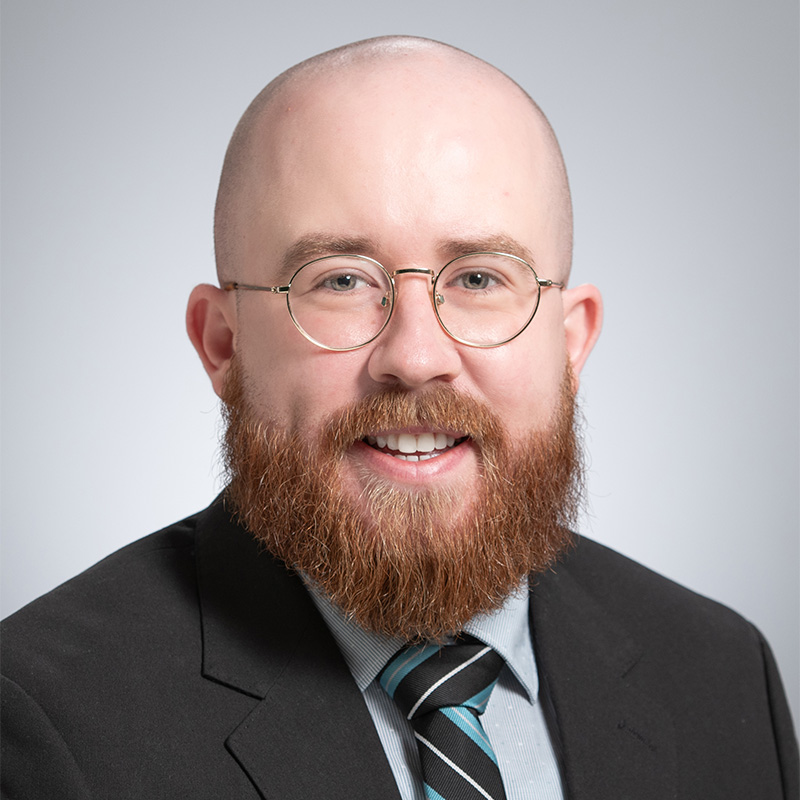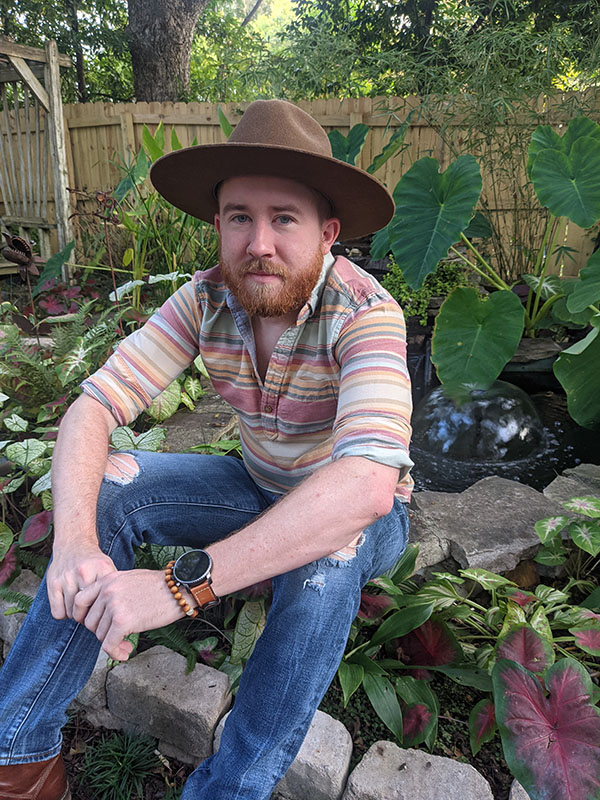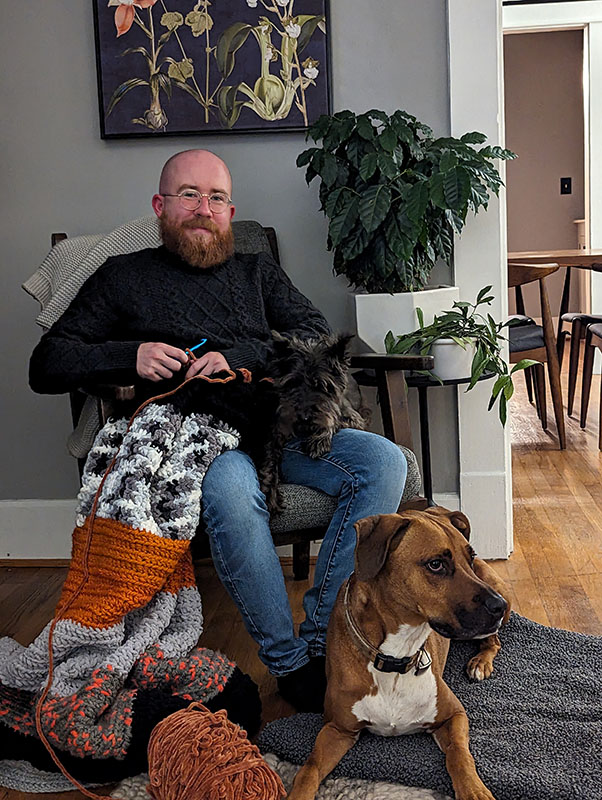 UAB Department of Medicine Facilities Coordinator Corey Cates, M.S., was six years old when he was diagnosed with Type 1 diabetes. For doctors to uncover Cates’ diagnosis, it took a two-and-a-half-hour drive as well as a one-week stay at the Children's Medical Center in Dallas, TX in 1996.
UAB Department of Medicine Facilities Coordinator Corey Cates, M.S., was six years old when he was diagnosed with Type 1 diabetes. For doctors to uncover Cates’ diagnosis, it took a two-and-a-half-hour drive as well as a one-week stay at the Children's Medical Center in Dallas, TX in 1996.Cates’ parents and teachers observed that he was drinking excessive amounts of water and going to the bathroom more than most children, when he was in the first grade.
The small, rural hospital near Cates’ hometown in Texas could not figure out what was wrong. That is when his parents took the long drive to a more urban medical center. When Cates finally received his diagnosis, he said it was difficult to just be a “normal” kid anymore.
In college, Cates went on to work at Camp Sweeney, a summer camp for children with diabetes, for multiples summers. He says that connection with others who had similar experiences made all the difference in living with a chronic disease.
“Despite being a college student and counselor, I learned a lot from the camp and got inspiration from the campers. I highly suggest something like this for anyone with kids that have diabetes. Having the disease and not knowing anyone else with it can make anyone feel isolated. This camp connected kids with lifelong friends and showed everyone that they can live successful lives despite having diabetes,” said Cates.
 Cates has now been living with Type 1 diabetes for 28 years. He says that even though there have been some difficulties in his journey with managing Type 1 diabetes, he has his A1C under control and is living successfully with diabetes, thanks in part to the care of Carlos Arguello, M.D., FACE, professor in the UAB Division of Endocrinology, Diabetes, and Metabolism as well as senior scientist in the UAB Comprehensive Diabetes Center.
Cates has now been living with Type 1 diabetes for 28 years. He says that even though there have been some difficulties in his journey with managing Type 1 diabetes, he has his A1C under control and is living successfully with diabetes, thanks in part to the care of Carlos Arguello, M.D., FACE, professor in the UAB Division of Endocrinology, Diabetes, and Metabolism as well as senior scientist in the UAB Comprehensive Diabetes Center.Cates says that Arguello actively listens to his concerns and works with him as a care advocate.
“I’ve had many doctors over the years and Dr. Arguello is by far one of my favorites. He spends time with me and answers all my questions and genuinely is concerned with improving my health,” said Cates. “One of the more important aspects I look for in my Endocrinologist is for them to also listen to me when it comes to understanding what is currently ongoing with my diabetes.”
Cates is proud of the life and career he has built, despite living with a disease that requires hour-by-hour and sometimes minute-by-minute attention. As a facilities coordinator, he works in the Department of Medicine Chair’s Office to coordinate office and lab moves, facility renovations, maintenance issues, and space allocations for the department.
“I’ve been at UAB for over four years, and I completed my master’s degree in Biology from UAB in 2015. In my free time, I enjoy gardening, hiking, crocheting, and travelling. I also spend a lot of time renovating my historic house and spending time with my partner, two dogs, and three chickens.”
For Cates, one of the most important tools in managing his diabetes has been using new medical technology. From 1996 to 2010, he took daily injections and had many daily finger sticks, but after researching insulin pumps, he tried an insulin pump at one of his endocrinology appointments.
Since trying out an insulin pump, Cates has been sold on the technology ever since. He said he was always hesitant about insulin pumps because he did not like the idea of having something always stuck on and in his body. But, he feels that having an insulin pump has completely changed his quality of life with diabetes and made managing diabetes much easier.
 Just a few years ago, Cates also added a continuous glucose monitor to his diabetes management strategies.
Just a few years ago, Cates also added a continuous glucose monitor to his diabetes management strategies.“Since starting a CGM a few years ago, my A1C has dramatically dropped. It is so much easier to keep my numbers in check when I am constantly notified on my phone. It has given me so much more freedom with what I can eat because I can track my blood sugar in real time. Using the new medical technology has made everything so much better and easier.”
November is Diabetes Awareness Month, and Cates says it is more important now than ever that those with diabetes, their loved ones, and even community members unaffected by diabetes continue to educate themselves on diabetes, especially the signs and symptoms.
“Being from a small rural town, I was one of the first people there to be diagnosed with diabetes, and my teachers and family had to learn about it with me. Awareness month is important because the disease is fairly common and people need to know the signs to look for, but also, it helps everyone to understand what the disease is.”
Cates iterated that the more people that know about diabetes, the better it will be for those with diabetes to move throughout the world around them. With 37.3 million people in the U.S. with diabetes—or 11.3% of the US population–understanding the disease could be more important now more than ever.
 “Even things like going through airports can be made extra difficult with diabetes because if security doesn’t understand or know about the disease, they assume the needles in my carryon are something prohibited. It can add many more steps to the process of traveling. Awareness month helps to spread knowledge of the disease that is quite often misunderstood. Being diabetic is hard enough and living in an uninformed society makes it even harder,” said Cates.
“Even things like going through airports can be made extra difficult with diabetes because if security doesn’t understand or know about the disease, they assume the needles in my carryon are something prohibited. It can add many more steps to the process of traveling. Awareness month helps to spread knowledge of the disease that is quite often misunderstood. Being diabetic is hard enough and living in an uninformed society makes it even harder,” said Cates.Cates is excited by the ongoing research in diabetes, particularly in the UAB Comprehensive Diabetes Center’s work with Verapamil. He suggests that a pairing of both an upstream and downstream approach could be helpful to improving the lives of those with diabetes. If diabetes cannot be reversed, he notes that working on improving technology cross-talk and function between CGM’s and insulin pumps is a close second.
“UAB’s drive to increase collaboration between researchers and different disciplines gives me hope that our researchers may work with some of the other departments across campus to be on the leading edge of diabetes technology research.”